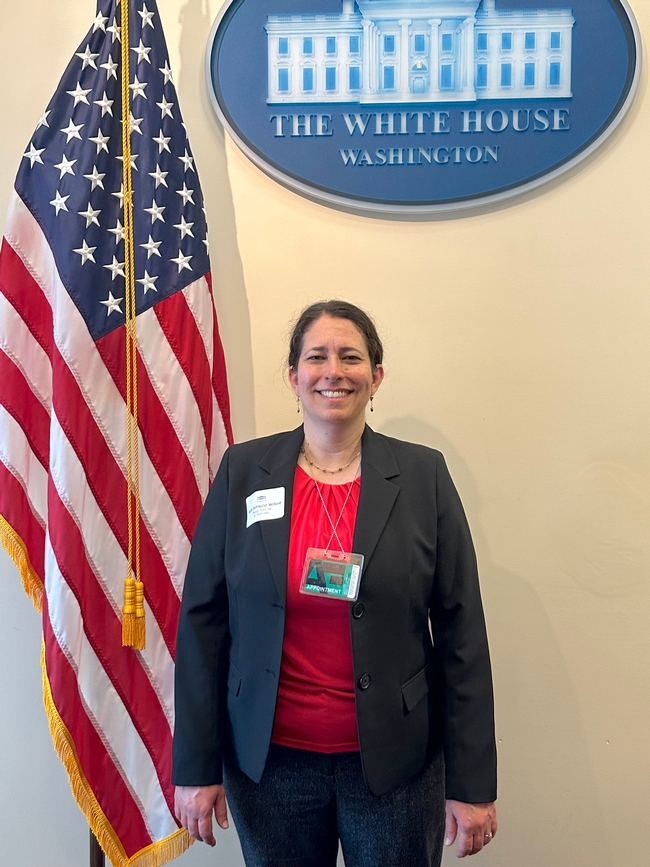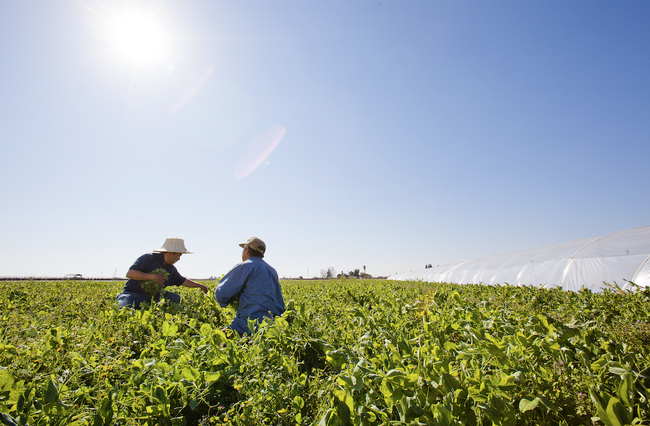UC ANR Small Farms Network supports small-scale and underserved farmers impacted by extreme heat
Ruth Dahlquist-Willard, interim director for the UC Sustainable Agriculture Research and Education Program, joined more than 100 participants from across the country at the first-ever White House Summit on Extreme Heat. Community representatives and practitioners met with federal agency representatives and Biden Administration officials to discuss successful locally tailored, community-driven practices to adapt to extreme heat as well as available federal resources.

In the agricultural sector, extreme heat events can cause heat illness in farmworkers, crop losses and changes in pest pressure. California crop losses due to drought, wildfire and heat were estimated at $239 million in 2023.
Disaster relief funds are available to help growers recover from lost production due to extreme heat. Since 2021, the UC ANR Small Farms Network has connected small-scale farmers with over $5.8 million in direct-to-producer relief funds for losses related to drought, flooding and other extreme weather events.
To further support small-scale farmers in adapting to the changing climate, Dahlquist-Willard and the Small Farms Network are evaluating how the extreme heat of summer 2024 impacted farmers. Farmers reported anecdotal observations that included:
- Shifting work hours to cooler parts of the day
- Closing farm stands and farmers markets due to extreme heat
- Crops ripening more quickly than expected, impacting harvesting and packing schedules
- Poor fruit set due to extremely high temperatures
The team is working to determine what damage symptoms on small-acreage California specialty crops can be attributed to extreme heat based on scientific literature and assessments from UC ANR colleagues. Understanding the impact of extreme heat on the farming community can help inform research and policy, ultimately equipping farmers with strategies to adapt to extreme heat events.
“It was inspiring to meet with leaders from around the nation who are working to support communities impacted by extreme heat and learn about the creative solutions they are implementing,” said Dahlquist-Willard. “The challenges faced by these communities make it all the more important to continue to work against climate change by reducing greenhouse gas emissions, as well as to develop new methods and resources to mitigate the effects of extreme heat and other climate impacts.”
The Extreme Heat Summit highlighted the Biden-Harris Administration's investments in climate reliance and put forth an Extreme Heat Call to Action calling upon public and private sectors to prepare for future extreme heat events. Communities and governments interested in participating are asked to use all available tools to protect people from extreme heat. Approaches and tools which could be used to protect people and resources from extreme heat are highlighted in the U.S. Climate Resilience Toolkit and the National Heat Strategy. Submissions for the Call to Action will be accepted through Nov. 1, 2024.
Further reading:
Heat Illness Prevention, UC Davis Western Center for Agricultural Health and Safety
Pathak et al., 2018. Climate Change Trends and Impacts on California Agriculture: A Detailed Review
